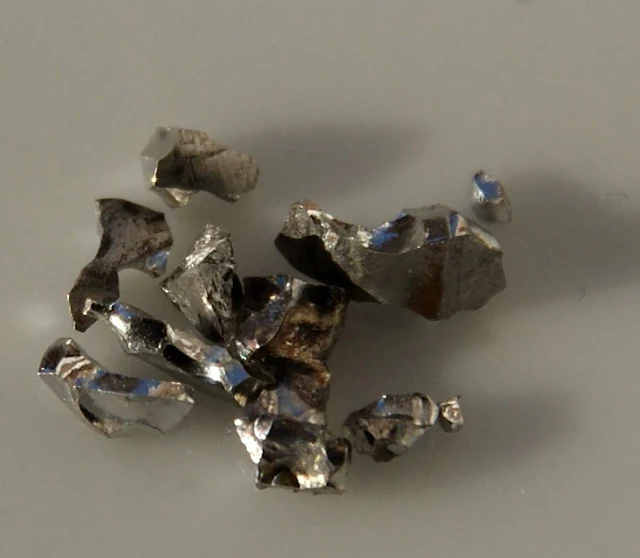Heavy Metal Found in Meteoroids Kills Cancer Cells
 |
| Heavy Metal Found in Meteoroids Kills Cancer Cells. Iridium pieces. Photo: Jumk.de Webprojects |
Rare metal from the asteroid that killed the dinosaurs can cure cancer, says professor
Iridium—the world’s second densest metal—can kill cancer cells by filling them with a deadly version of oxygen, while leaving healthy tissue unharmed.First discovered in 1803, iridium gets its name comes from the Latin for “rainbow.” Hard, brittle, and yellow, the metal comes from the same family as platinum and is the world’s most corrosion-resistant metal.
Iridium is rare on Earth, but is abundant in meteoroids—and large amounts of iridium have been discovered in the Earth’s crust from around 66 million years ago, leading to the theory that it came to this planet with an asteroid which caused the extinction of the dinosaurs.
“This project is a leap forward in understanding how these new iridium-based anti-cancer compounds are attacking cancer cells, introducing different mechanisms of action to get around the resistance issue and tackle cancer from a different angle,” says study coauthor Cookson Chiu, a postgraduate researcher in the chemistry department at the University of Warwick.
Shining visible laser light through the skin onto the cancerous area triggers the process—this reaches the light-reactive coating of the compound and activates the metal to start filling the cancer with singlet oxygen.
Photochemotherapy—using laser light to target cancer—is fast emerging as a viable, effective, and non-invasive treatment. Patients are becoming increasingly resistant to traditional therapies, so it is vital to establish new pathways like this for fighting the disease.
The researchers found that after attacking a model tumor of lung cancer cells, which the researchers grew in the laboratory to form a tumor-like sphere, with red laser light (which can penetrate deeply through the skin), the activated organic-iridium compound penetrated and infused into every layer of the tumor to kill it—demonstrating how effective and far-reaching this treatment is.
They also proved that the method is safe to healthy cells by conducting the treatment on non-cancerous tissue and finding it had no effect.
“Our innovative approach to tackle cancer involving targeting important cellular proteins can lead to novel drugs with new mechanisms of action. These are urgently needed,” says Pingyu Zhang, a fellow in the chemistry department at the University of Warwick.
“Remarkable advances in modern mass spectrometry now allow us to analyze complex mixtures of proteins in cancer cells and pinpoint drug targets, on instruments that are sensitive enough to weigh even a single electron!” says Peter O’Connor, professor of analytical chemistry.
After analyzing huge amounts of data—thousands of proteins from the model cancer cells—they concluded that the iridium compound damaged the proteins for heat shock stress and glucose metabolism, both known as key molecules in cancer.
“The precious metal platinum is already used in more than 50 percent of cancer chemotherapies. The potential of other precious metals such as iridium to provide new targeted drugs which attack cancer cells in completely new ways and combat resistance, and which can be used safely with the minimum of side-effects, is now being explored,” says Peter Sadler, whose lab is in the department of chemistry at the University of Warwick.
Sadler adds: “It’s certainly now time to try to make good medical use of the iridium delivered to us by an asteroid 66 million years ago!”
The above story is based on Materials provided by University of Warwick.

%20(1).webp)






